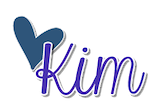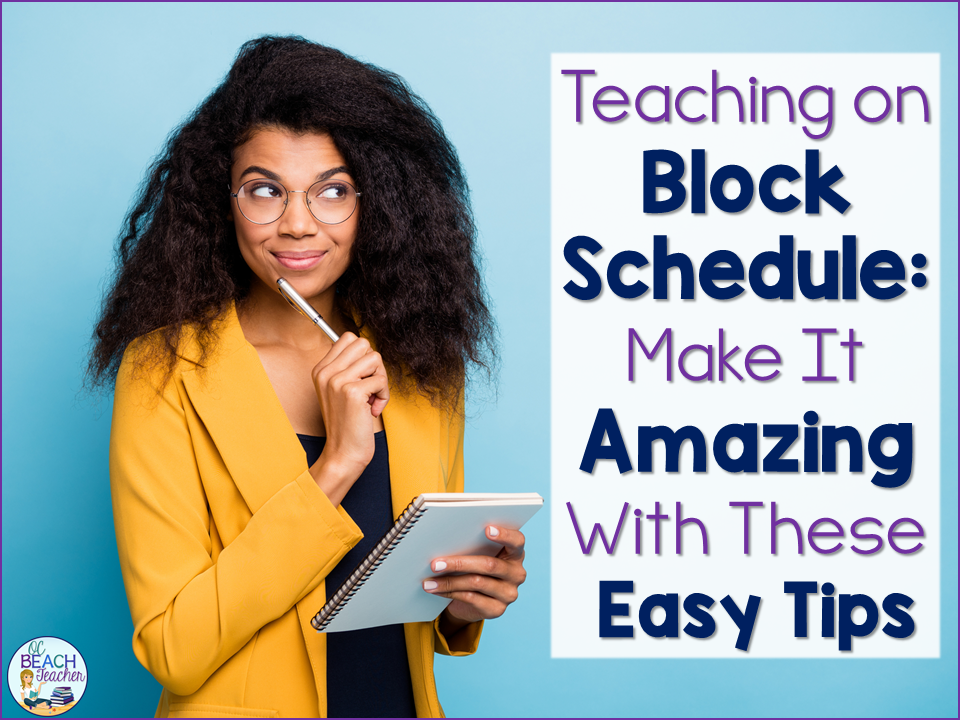When I started teaching, I worked at a school with a 7-period day and 46-minute class periods. I was accustomed to this schedule but then I started a new teaching position where the school system used a 90-minute block schedule. At first, I was afraid that 90 minutes would be horrible: How would I fill that much time with instruction? How would I keep students engaged? Over many years, I’ve learned to love this schedule.
Recently, many schools have moved to a block schedule as a strategy to make classes smaller because of the pandemic. I’ve seen many teachers post on social media and lament the change. They’ve asked for advice on how to teach so I have suggestions to help below.
Vary Activities
Whether they are 80, 90, or 100 minutes, block classes are long. Plan three – five activities in a class period. It is not productive to lecture for the entire time. In fact, research shows that lectures should be no more than 20 minutes for high school students and 15 minutes for middle school. Also, consider students with ADHD, who even struggle in shorter class periods. No doubt, it’s important to use a variety of instructional strategies to maintain students’ attention. Of course, it’s always important to consider your content, age of students, and their abilities. Some students can focus for longer and can tolerate longer lessons. The science teachers at my school tell me they appreciate extra time for labs, and I need longer times for roundtable discussions in my AP English Literature classes.
As part of your daily routine, you may want to plan an opening activity, follow it with a mini lesson, provide guided practice, and then give independent practice. Lastly, you may want review and closure activities. In my opinion, the opening activities are essential because they will “hook” students and immediately focus them.
Peak Into A Day
In my ELA class on Mondays, I start with a relevant journal warm up. After students think and write for five – seven minutes, they meet with a classmate to share their responses; then, we follow that with whole-class discussion. The entire activity takes about 20 minutes. Next, I present the learning objectives, success criteria, class agenda, homework, and announcements, which takes 5 minutes. Then, I present a 15-minute Power Point presentation on a grammar concept and add 20 minutes of guided practice (whole class and/or small groups). After guided practice, students complete 20 minutes of individual practice, and end with a 5-minute closure activity. Transitions may take a few minutes and if there is additional time leftover, I may allow students to pack their supplies and prepare for their next classes. Ultimately, it’s easy to fill a 90-minute block with a variety of learning activities and lessons.
Use Transitions
For classroom management, you will want to have smooth transitions from one activity to another. Using an alarm is helpful at keeping track of time and managing the pace of class. There are numerous online timers but I just use my phone timer. When students start with an anticipation guide, journal activity, or bell ringer, I allocate five – ten minutes. In a 50-minute class period, teachers only have two – three minutes for starters. In middle school, teachers may use classroom lights, clapping, hand gestures, and other attention-getting strategies for their transitions. Furthermore, think about how to make connections between activities with your transitions.
Pace Curriculum
I plan in chunks for daily, weekly, monthly, and semester instruction. At the beginning of each semester, make a calendar and mark important dates such as standardized testing days, holidays, school events, and half days. Keep in mind that students may be restless after taking long standardized assessments. Also, pay attention to distractions during spirit weeks, and before school dances and championship games.
No doubt, if your supervisor gives you a curriculum calendar, you’ll follow that timeline. If you have flexibility with your curriculum, plan to cover all your standards on your academic calendar. Estimate time for lessons. As a beginning teacher, accurately estimating time challenged me, and now I am usually over-planned. It is easier to eliminate lessons than add them- especially in the middle of a class period.
After marking your calendar, map out units but don’t add many details. In my experience, timelines will change because of unforeseeable circumstances. Then make weekly plans. By making daily routines for specific days of the week, this is much easier. For instance, I have set times for Silent Sustained Reading, grammar, journaling, and test preparation. Finally, I add details in my daily lessons.
Incorporate Movement
Humans are not made to sit at desks all day long, especially tweens and teens. Carousel and gallery activities get students moving around the classroom. Stations allow students to rotate to various locations in a classroom. And students love meaningful fun activities such as trashketball games, speed dating, and conga poetry.
To facilitate movement, set up your classroom in a way that makes it easy for you and the students to move around. It’s also helpful to have procedures for moving desks or tables quickly so students can do group work or Socratic seminars.
Change the Setting
If possible, take students out of your classroom on occasion. My students go to our media center to select books, complete research, and learn about Banned Books. When the weather is warm, I take them outside to read or write. If your school allows it, plan a scavenger hunt or game in the gym.
This also allows you to collaborate with other staff. My media center specialist joins us in “tease to read” days. Often, I coordinate with special education teachers who take individuals or groups of students to a different classroom for part of the block.
For your students with attentional challenges, you may want to assign them jobs and errands such as taking the attendance to the main office or distributing and collecting materials. Once, I had a colleague who assigned different seats to a student with severe ADHD. In each class period, the student moved to three desks in distinct locations in the classroom.
Employ Cooperative Learning
Use pairing, triads, and larger groups to vary instruction. From day one, I use icebreakers and team builders to create a comfortable classroom community. Students are expected to respect every other class member. One way I establish this expectation is to have students work in a variety of groups. I often use “think-pair-share” or “turn and turn talk” to give students an opportunity to rehearse their thoughts with a classmate before asking them to share in whole-class discussion. Another favorite strategy of mine is jigsaw. It’s helpful for students to work in two different groups for the same lesson, and by putting them in home groups and expert groups, it helps create accountability. I also use literature circles and roundtable discussions for our reading of novels.
Prepare for Early Finishers
It helps to plan for students who finish classwork early in a long block. I have been known to use Passion Projects and enrichment activities such as writing contests for early finishers. However, I make sure to check that they have completed the required assignments carefully before they can do these extra activities.
It may be challening at first, but once you’ve taught on block schedule a few times, you may not be ablet to imagine teaching on any other schedule.
Have you moved to online teaching with block scheduling? Here’s another blog post with tips to help with distance and hybrid learning.



